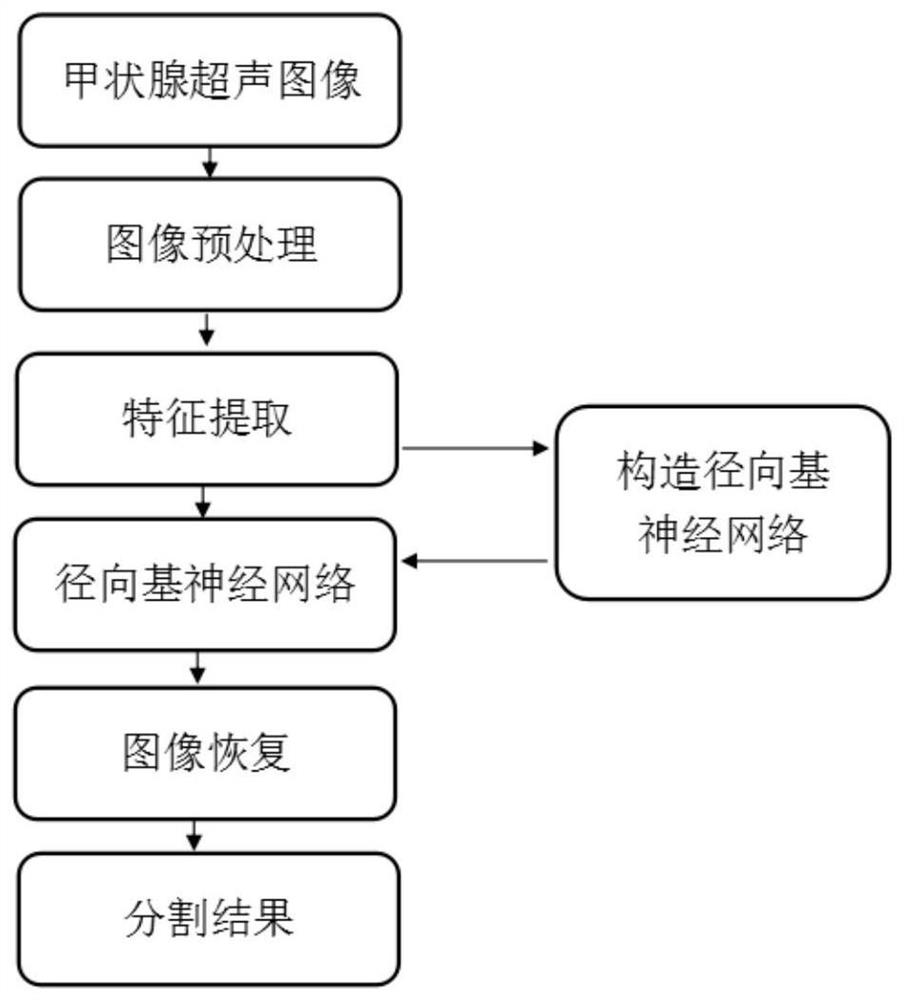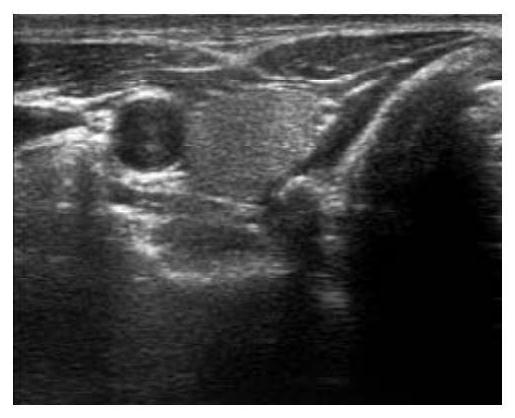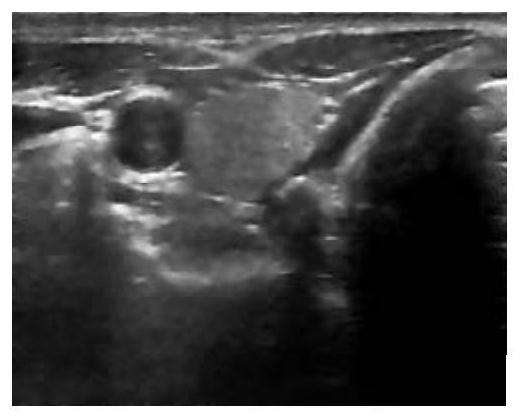An automatic segmentation method for thyroid ultrasound images based on radial basis neural network
A technology based on neural network and ultrasound images, applied in the field of automatic segmentation of thyroid ultrasound images based on radial basis neural network, can solve the time-consuming training process and other problems, achieve good classification effect, high discrimination ability, and improve performance
- Summary
- Abstract
- Description
- Claims
- Application Information
AI Technical Summary
Problems solved by technology
Method used
Image
Examples
Embodiment Construction
[0081] The following in conjunction with embodiments, the present invention will be further described in detail, but embodiments of the present invention is not limited thereto.
[0082] as Figure 1 As shown, the present embodiment of a radial base neural network based thyroid ultrasound image automatic segmentation method, comprising the following steps:
[0083] (1) Enter the original image, as shown in Figure 2(a);
[0084] (2) Pre-processing of the original image;
[0085] (2-1) The original image is noise-reduced using adaptive weight median filtering (AWMF), and the results of the filtering are as shown in Figure 2(b);
[0086] AWMF calculates the weight w for each pixel in the area by counting the local area i,j 。 For the region template of M×M, the point weight coefficient w at the position (i,j). i,j It can be defined as follows:
[0087]
[0088] μ of them x,y and The average of the pixel grayscale values and the variance within the template area, respectively, are th...
PUM
 Login to View More
Login to View More Abstract
Description
Claims
Application Information
 Login to View More
Login to View More - R&D
- Intellectual Property
- Life Sciences
- Materials
- Tech Scout
- Unparalleled Data Quality
- Higher Quality Content
- 60% Fewer Hallucinations
Browse by: Latest US Patents, China's latest patents, Technical Efficacy Thesaurus, Application Domain, Technology Topic, Popular Technical Reports.
© 2025 PatSnap. All rights reserved.Legal|Privacy policy|Modern Slavery Act Transparency Statement|Sitemap|About US| Contact US: help@patsnap.com



